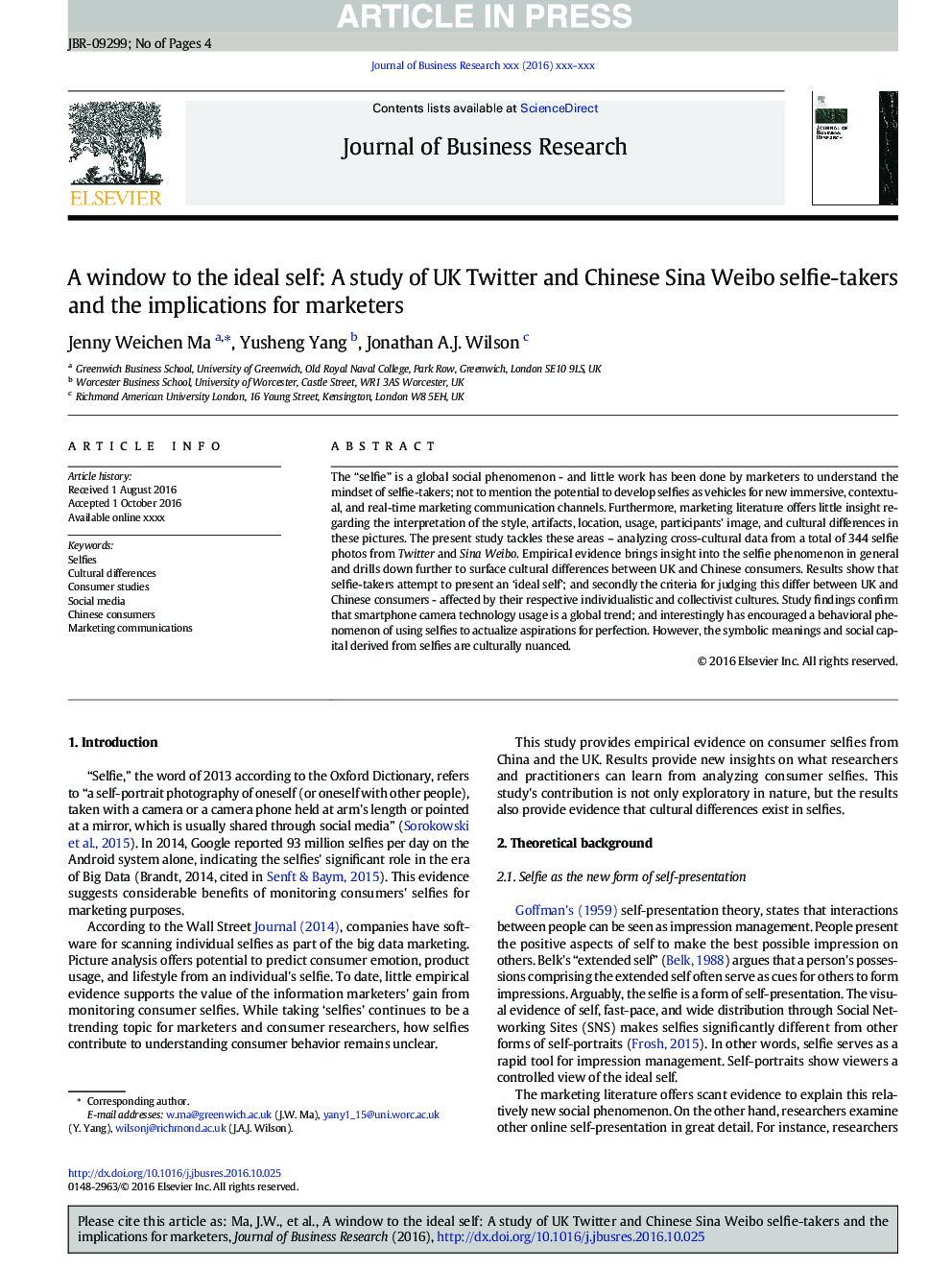| Article ID | Journal | Published Year | Pages | File Type |
|---|---|---|---|---|
| 5109504 | Journal of Business Research | 2017 | 4 Pages |
Abstract
The “selfie” is a global social phenomenon - and little work has been done by marketers to understand the mindset of selfie-takers; not to mention the potential to develop selfies as vehicles for new immersive, contextual, and real-time marketing communication channels. Furthermore, marketing literature offers little insight regarding the interpretation of the style, artifacts, location, usage, participants' image, and cultural differences in these pictures. The present study tackles these areas - analyzing cross-cultural data from a total of 344 selfie photos from Twitter and Sina Weibo. Empirical evidence brings insight into the selfie phenomenon in general and drills down further to surface cultural differences between UK and Chinese consumers. Results show that selfie-takers attempt to present an 'ideal self'; and secondly the criteria for judging this differ between UK and Chinese consumers - affected by their respective individualistic and collectivist cultures. Study findings confirm that smartphone camera technology usage is a global trend; and interestingly has encouraged a behavioral phenomenon of using selfies to actualize aspirations for perfection. However, the symbolic meanings and social capital derived from selfies are culturally nuanced.
Keywords
Related Topics
Social Sciences and Humanities
Business, Management and Accounting
Business and International Management
Authors
Jenny Weichen Ma, Yusheng Yang, Jonathan A.J. Wilson,
